Hospitality insights on the inbound outbound dilemma in Hong Kong
By Shaman ChellaramReduced spending from visitors entering Hong Kong has made the headlines lately as the city tries to boost its tourism, retail and hospitality sectors.
Hong Kong’s outbound travel trend, whilst in line with pre-pandemic levels, is being stimulated by improved accessibility with the Greater Bay Area and the weaker currencies in the Mainland and key destinations such as Japan
The strong dollar means people’s Hong Kong Dollars are stretching further in those markets whilst Hong Kong has become more expensive for many inbound visitors.
The growing trend of visitors looking for more meaningful experiences rather than material purchases is amplifying this impact, evidenced over Chinese New Year and the recent May Labour Day Holiday, with many inbound visitors opting to see the city’s sites whilst spending less, with some visitors coming in for the day, spending the night in Shenzhen (given the cheaper accommodation), and then coming back across to Hong Kong again.
As we cross the mid-way point of the second quarter of the year, let’s explore how visitor numbers and Hong Kong’s hotel sector performed in the first quarter of 2024.
Overnight visitors surge year-on-year
Against the backdrop of the city’s 34 million visitors in 2023 (of which 17.16 million were overnight visitors), Q1 2024 had 11.23 million total visitors, with nearly 8.7 million (77%) from the Mainland. Of the total visitors, 5.6 million were overnight visitors, up 240% year-on-year, with 3.86 million (69%) from the Mainland and the balance from short-haul and long-haul markets.
The US was the largest contributor from the long-haul market segment with 134,070 overnight visitors, whilst Japan, the Philippines, South Korea, Taiwan and Thailand each contributed over 100,000 inbound overnight visitors. India has become another key source market, with over 45,000 visitors for the quarter.
Approximately 60% of total visitors came for vacation, 22% for visiting family and friends, 10% for business and 8% for other reasons. Understanding the nature and purpose of inbound visitors and unpacking these trends has enabled certain hoteliers to better cater to different segments of the market.
Whilst overnight visitors surged year-on-year for the first quarter, the number remained 28% below the 7.775 million overnight visitors in Q1 2019.
Hotel performance – a local perspective
Occupancy (OCC) for Q1 2024 was 85%, up from 76% for the same period in 2023. Average Daily Rate (ADR) was up 19% to HKD 1,430 against the Q1 2023 average of HKD 1,200. Revenue Per Available Room (RevPAR) climbed to HKD 1,216 versus HKD 912 in Q1 2023, although just slightly above the full-year 2023 RevPAR of HKD1,148.
Taking a closer look at the month-on-month performance, daily rates for January and February 2024 were up significantly (between 20% to 40%) in 1Q23, boosted by Chinese New Year and major events compared with the fact that Hong Kong had just started to open up in early 2023.
As for March 2024, ADR slid between 2% to 5% across most segments against March 2023 numbers (other than a slight increase in midscale/medium tariff hotels and some luxury hotels), suggesting a slight softening in the market.
On a district level, Yau Ma Tei and Mong Kok in Kowloon performed strongly, with occupancy averaging 94% for the first three months of the year. Tsim Sha Tsui was in the high 80% range for the same period, with other Kowloon locations hovering at the mid-80% level. Central and Western posted high - 70% occupancy, whilst Wanchai was at 84% for the quarter.
In terms of categories, High Tariff A Hotels (upscale, upper upscale and luxury) lagged the market with occupancy in the high 70% range versus 87% for High Tariff B Hotels and 88% for Medium Tariff Hotels, reflecting the trend of more budget-conscious inbound visitors. ADR for the respective categories were HKD 2,409, HKD1,124 and HKD758.
Dissecting the High Tariff A segment, at the pure luxury end of the market with ADRs significantly over HKD 3,000, occupancy rates lagged further in the 45%-70% range depending on the hotel, although some luxury operators held rates at fairly high levels.
Rates and occupancy peaked during major events and holiday periods, but perhaps not meeting operators’ initial expectations, especially for full-service hotels, as the city looked to balance the effect of the inbound numbers with the outbound trend. The reduced inbound spending and outbound trend have further impacted non-room revenue, with banquet and food and beverage numbers significantly off for most operators. For example, over the Easter holiday at the end of March, the city witnessed an outflow of almost 2 million people, whilst inbound visitors reached 1.2 million.
Hotel supply
At the end of March 2024, the city boasted 324 hotels with 90,501 keys, up from 321 hotels in 2023. Hong Kong was graced with the grand reopening of Lanson Place Causeway Bay following the stunning renovation led by Parisian hotel designer Pierre-Yves Rochon, with several new hotel openings planned for later this year and 2025.
In addition to the main hotel segment, statistics on the guesthouse accommodation sector reveal the city had 1,312 guesthouses with 11,264 rooms at the end of the quarter - although these numbers are respectively 14% and 12% below the 2019 levels reflecting a loss of nearly 1,500 guesthouse rooms over the period.
Hotel Performance – a global perspective
It is important to look at Hong Kong’s hotel performance on an international level.
If we look at the sector as whole, the city continues to be a relatively strong performing hotel market in a global context. However, certain segments, especially at the pure luxury end, still lag other major global gateway cities in terms of rate and occupancy and in terms of the pre-pandemic levels they were accustomed to.
STR data for Q1 2024 points to Hong Kong’s average occupancy of around 73% with ADR at USD 204 Dubai, London, Mumbai, Singapore and Sydney were all at 80% occupancy or just over for the quarter. In terms of ADR, Paris (USD 309), New York (USD 231), Dubai (USD 226) and Singapore (USD 216) were the key gateway cities leading the charge. Hong Kong has significant potential to shift up both in terms of rate and occupancy when compared to other global gateway markets.
The challenge remains in attracting higher spending visitors for longer and embracing and balancing the attention of both Mainland and international visitors.
Investment
Investment activity was muted in Q1 with one main notable transaction of The Sheung Wan By Ovolo for HKD 320 million, and another ‘rumoured’ transaction in the region of HKD 1 billion for a newly built hotel in Kowloon for possible student accommodation usage. The volume for both hotels reflects around 7.7% of the total APAC hotel investment volume for the quarter. Several hotel deals remain under discussion in Hong Kong, but transactions are limited.
With interest rates likely staying higher for longer and given the lack of bank financing, there is no sense of urgency from buyers to act fast, unless there is a strategic reason or pricing shifts to a level where strong risk-adjusted returns are feasible.
The longer interest rates stay at elevated levels, the increasing likelihood of downward pricing pressure on assets, especially where higher debt levels remain an issue. This is the same across London, New York and Hong Kong, although we have already seen cap rates move out in the first two.
The rhetoric from the Federal Reserve remains uncertain. Whilst pricing in Hong Kong on a ‘per square foot’ basis is looking more attractive, buying at a 3% to 4% cap rate is challenging in this market, especially when the cost of commercial debt is hovering at 7%+, with private debt starting in the low double-digit range.
Private Equity Real Estate Funds are exploring credit strategies over pure equity, and family offices continue to weigh their options to perhaps acquire all cash first and refinance later. The buyers in the market are either strategic end-users or opportunistic.
On a thematic basis, interest in acquiring under-performing hotels for conversion to student accommodation remains strong. The sector faces significant under supply, especially for larger professionally managed accommodation offerings.
However, these conversions only work in certain cases with key factors such as location, accessibility, licensing, zoning, layout, conversion costs, operational expenses, potential net income, staffing and facilities, to consider.
Events, hotels & the power of social media
Hong Kong has hosted some great events and conferences over the last few months, with more planned. Art Basel and Art Central at the end of March were a success. This was followed by the Hong Kong Rugby Sevens in early April.
There have been local and international music festivals like Jungle Island Music Festival on Lantau in March and Creamfields in April. The Standard Chartered Marathon earlier in the year was another standout event. Trade fairs continue to fill up the space at the city’s exhibition centres.
The city has momentum and events are coming back. There is a need to be bolder, look at the city’s overall offering and positioning, and aim higher for Hong Kong to become a magnet for global talent, mega events and higher-spending international visitors.
The hard part is monetising that to reflect positively across the whole hospitality sector and boost consumption and spending whilst delivering a memorable experience whether for business or leisure travellers.
To further this objective, the Hong Kong Tourism Board (HKTB) has launched a series of initiatives including a ‘Hong Kong Incentives Playbook’ for the MICE (Meetings, Incentives, Conferences & Events) sector, ‘Hong Kong Pals’ with Key Opinion Leaders (KOLs) and an enhanced strategic partnership with Xiaohongshu (known as the ‘Little Red Book’) – a Chinese social media platform with over 200 million active users. Hong Kong received the tag “Destination Most-Loved by Users – High-Flyer of the Year” and is the first outbound destination to confirm a strategic partnership with the platform.
The parties will curate specific promotions and share Hong Kong’s unique attraction as an international city, with a diverse culture and year-round mega-events, targeting different Mainland segments. Guests, hotels, restaurants and bars are increasing their presence on Xiaohongshu and other social media platforms, transforming the way they engage online and offline.
Positive start with a less clear trajectory for the year
Whilst 1Q got off to a strong start, hotel performance softened at the end of March. As we enter April and early May, some uncertainty has crept in with a slight pull-back in performance.
At the full-service end, hoteliers may potentially have to revise budgets to realign their forecasts for the year as performance from both room and non-room revenue looks less clear versus the optimism shared at the outset of the year.
For limited-service hotels, high occupancies are expected to continue, but can rates be pushed up further and still attract the budget-conscious traveller?
The strong currency and high interest rates are having their ‘undesired’ impact, yet perhaps the opening-up of additional international and Mainland source markets coupled with the city’s expanded ‘Mega Events’ schedule can boost the sector in the coming months.




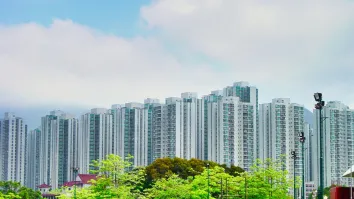

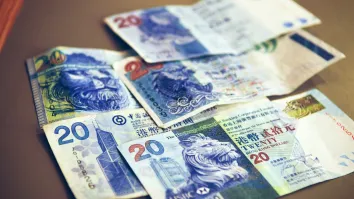









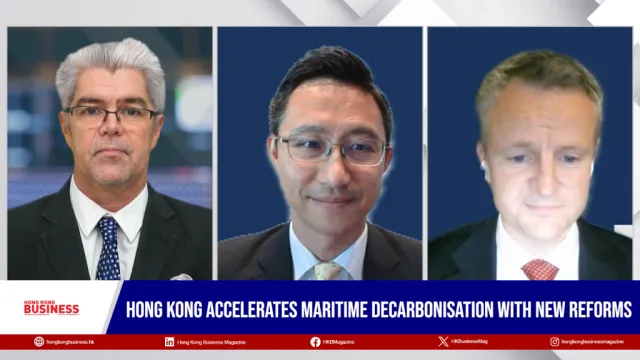
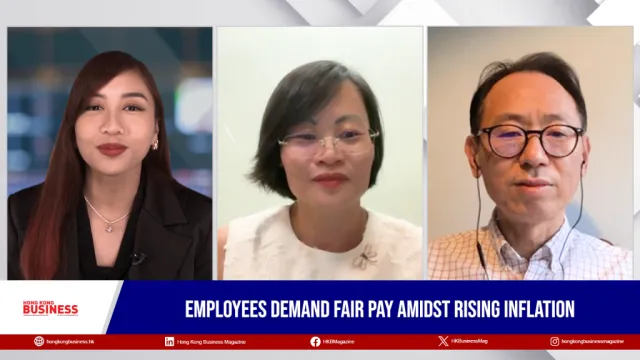

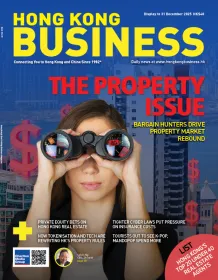
 Advertise
Advertise






